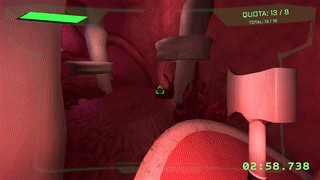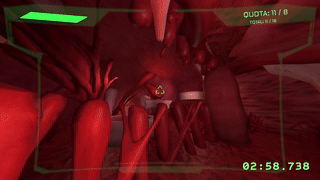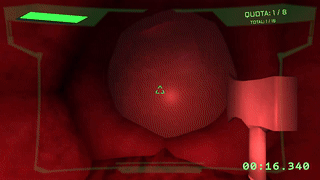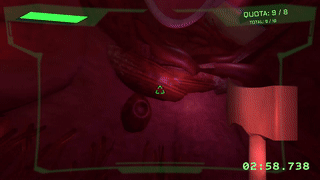Project REDUX (name TBA) is a first-person puzzle-platformer, where players explore and scavange the insides of living sea monsters. Using your own two feet and a throwable/retrievable magnetic axe, solve visceral environmental puzzles, complete platforming segments, and face bodily hazards.
Full game tutorial, which, through framing, forces players to focus sightlights on crouching tutorials, platforming segments, alternate pathways and secrets, and key environmental block-ins.
Featurettes of Project REDUX's game jam slice. This prototype sees players trek deep into the inner bodily workings, upgrading gear to new areas, and being challenged by environmental hazards. Design focused on coercive hallways that encouraged players to advance and solve simple room-shifting puzzles. This rapid prototype was completed in six days, with two to three days allocated to blocking and design.




As Queen ANT-oinette, wield your tiny but powerful battalion against the ravaging Beetles.
In this single-player RTS, build an expansive line network of ants, charge against the waves of enemies to their base, set up defence towers, adapt to emerging ground pitfalls, and scrutinise the system efficiency of your army.
We wanted to take a literary approach to 'stumbling on stones,' where low-level detail, minutiae, struggle and failure, hubris and arrogance, and snap judgements are essential to the player experience. Hence, the project followed the design pillars of having:
Achieved through four gameplay loops (right), players will pay attention to resource, combat, network, and crisis management.
This RTS prototype, as seen through gameplay (loop below), was created through the following elements:
Ants ~
Network Building (Player Emergent Systems) ~
Hazards ~
The RTS arena underwent four revisions over the course of two days. The map encourages players to:
Within a playtested, balanced, and rubber-banded match, the gameplay loop challenged players to balance the holistic volume of and specific populations of Carpenter/Bullet ants, the placement, destruction, and scrutinization of the network system surrounding Navigation/Combat towers, the utility and number of Bullet Ants occupying various Combat towers, pushing forward and pulling back network lines to new and previously explored areas and Resource nodes based on network capabilities and system safety, adapting to emerging environmental hazards and enemy strategy (based on network growth), withstanding Beetle (enemy) attacks, and building a network capable of sending enough Bullet Ants to defeat the enemy base (win game).
In the release, rubber-banding is reliant on the number of towers created. A future design/implementation consideration and improvement would be to attach rubber-banding to the number of ants alive to avoid the exploit of rapidly growing an ant population with a small network, then making a fast push toward the enemy hill.
The goal was to create a dynamic, player-emergent system where players rely on hubris, reaction, and strategy to win. Noted through playtesting, matches lasted for an average of 10 to 20 minutes, with high retention and playthrough.
Following an "obstacles create the path" theme, the primary design pillars of this game were to:
Players must navigate a cocktail bar while balancing drinks and managing thirsty/disruptive patrons. Following the theme and beyond social commentary, the Frog patrons create a physical obstacle that changes player movement flow, as well as an interactable that players can strategically destroy (pushing/hitting). However, Player combat must be strategic in,
Themes of chaos and multitasking are highlighted by a unique (and intentionally difficult) control scheme that utilizes an Xbox controller and a two-button gamepad in each hand (above).